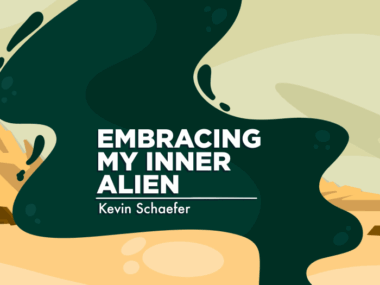I’m learning to recognize big ‘T’ trauma in my own life
Weeks after a near-death experience, a columnist puts a name to her feelings
Written by |

Jokes are my coping mechanism of choice. If there’s tension in the room, you can bet I’m trying to come up with some way to lighten the mood. I pride myself on staying as chipper as possible, even in difficult situations, like getting stuck repeatedly with needles. It’s amazing what a well-timed quip will do.
The bad thing about jokes is they don’t actually fix things; they only mask what’s going on beneath the surface. It doesn’t matter how many jokes I crack about being a tough stick. I feel the pain of every single poke.
A few weeks ago, I posted a Reel about medical trauma. I talked about how strange I felt after getting out of the hospital. I was always on edge, to the point of having anxiety attacks over the most unimportant things. Then there was the irritability — I felt spread thin, close to snapping, and for no apparent reason. My moods were all over the place. I was relieved to be back in the “real world” with the people I loved, but instead of spending time with them, I isolated myself and was reluctant to leave the house.
Hospitalizations are typically a motivating force in my life. I return home with a new lease on, well, everything — my career, my social life, my personal and professional writing. But I wasn’t inspired this time. In fact, I wasn’t feeling much of anything.
The aftermath of medical trauma
I knew in my head that I was experiencing some sort of acute stress disorder. Just like I knew, in my head, that what I went through in December was, by definition, traumatic.
I almost died. What could be more traumatic than that?
But I had put so much energy into keeping things light. I joked my way through the hospital, just like I joked my way through the eight-hour emergency room visit. I got home and immediately proceeded to joke my way through a half-dozen follow-up appointments with my care team. Every time I told the story, my experiences in Alabama became a little more distant, like they’d happened to someone else.
My friends were quick to remind me that I had narrowly escaped death and would probably feel off for a while. But the knowledge didn’t set in until a comment on my Reel unlocked something in my brain. I knew, in my head, that I was grappling with trauma.
I didn’t know it in my heart.
Recognizing big ‘T’ trauma
Sometimes I think it’s easier to recognize small “t” trauma, especially when you live with a rare disease. A series of unsuccessful lab draws, or a conversation with an ableist medical professional — these things are obviously bad, but also can be chalked up to life with SMA. It’s just how things are. We can recognize small “t” traumas because they rarely result in lasting pain.
Then there are the big “T” traumas. A life-threatening surgery, or an insurance appeal gone wrong — these things are unavoidable, and unlike small “t” traumas, they stick with us for months, if not years, to come. They’re impactful. They hurt. They wound us in very real, sometimes invisible ways. We wish they didn’t exist, so instead of looking the truth in the eye, we turn away.
We joke.
We say we’re fine when we’re not.
We turn our pain into something Instagram-worthy. A quick story to entertain dinner guests. We put so much psychic distance between us and our experiences that we become numb.
I knew, in my head, that I was grappling with big “T” trauma. But I didn’t know it in my heart.
Holding space for myself
I’m getting better. I still have bad days, but they are, at least, becoming less frequent. More importantly, I have the ability to name what I went through. I have the language for it now.
I still crack jokes. Quips are how I cope. But in the safety of my home, surrounded by the people I love, I can be honest about where I’m at, what I’m feeling, and what I need to move forward.
Thanks for reading! You can follow me on Instagram and Threads, subscribe to my newsletter, or support me on Substack.
Note: SMA News Today is strictly a news and information website about the disease. It does not provide medical advice, diagnosis, or treatment. This content is not intended to be a substitute for professional medical advice, diagnosis, or treatment. Always seek the advice of your physician or other qualified health provider with any questions you may have regarding a medical condition. Never disregard professional medical advice or delay in seeking it because of something you have read on this website. The opinions expressed in this column are not those of SMA News Today or its parent company, Bionews, and are intended to spark discussion about issues pertaining to spinal muscular atrophy.








Leave a comment
Fill in the required fields to post. Your email address will not be published.